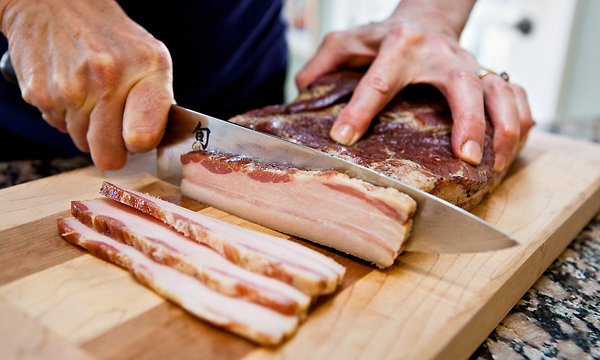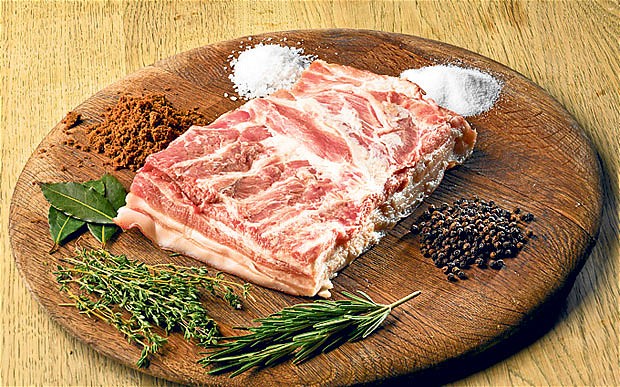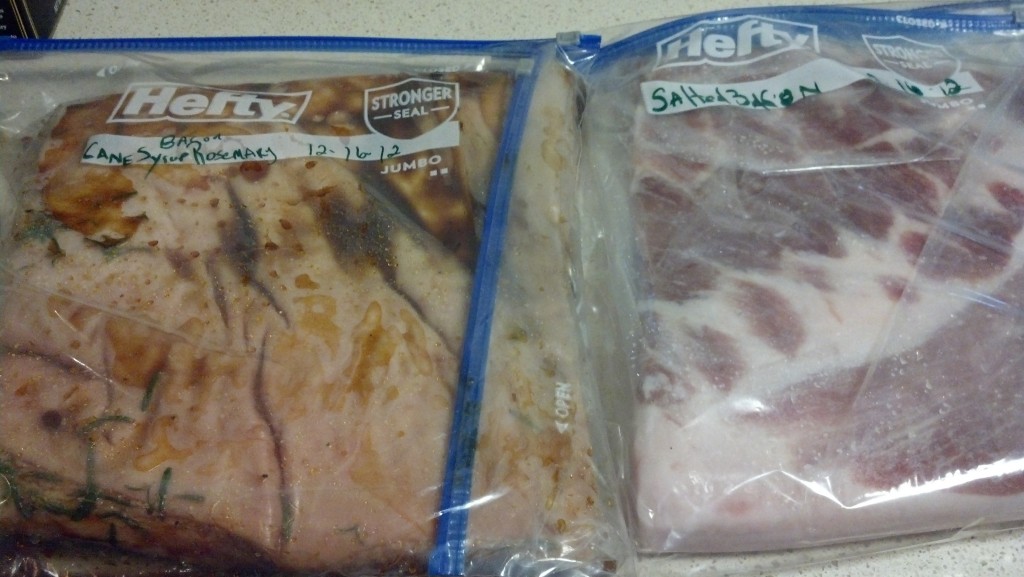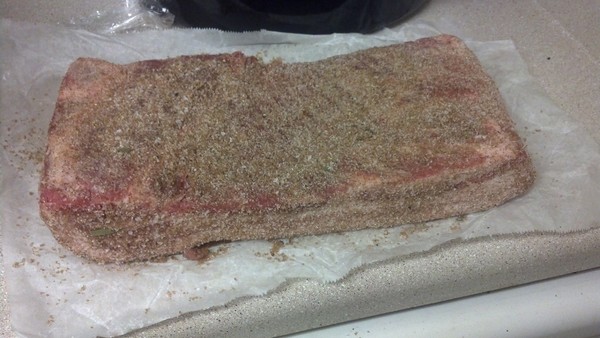How to Cure Your Own Bacon
Main Ingredients
Salt and Sodium nitrate are the two main ingredients in most old-fashioned curing rubs. The sodium nitrate turns into nitrite over time, and this helps to not only prepare the meat but to prevent contamination. It also helps to reduce the chances of the formation of botulism while the meat is being stored. You can use any type of salt, and you can easily obtain sodium nitrate from a store. If you use cold packs, you can use the ammonium nitrate and convert it through a simple process.
You will need the following items to create a basic cure: Salt, sodium nitrate or cold packs that have ammonium nitrate, baking soda, water, a large pot, cheesecloth or similar material, sugar and spices if desired and the meat. You will also need some twine to hold the bacon meat together.
Preparing the Ammonium Nitrate
The first step is to cut open the cold packs and place about 80 grams of ammonium nitrate into ¼ gallon of water. Stir until it is completely dissolved. Add 85 grams of baking soda to a pot. Filter the water/ammonium nitrate mixture through a fine-mesh strainer or coffee filter and pour into the pot. Bring the liquid to a boil until the liquid reduces by about 50%. This will release the ammonia, and it’s a good idea to do this outside so that the fumes and smell can dissipate into the air.
Remove from heat and allow the liquid to evaporate. The time that it takes will vary depending on your local climate conditions. However, the finished product will resemble granular salt crystals. You may want to consider adding some food coloring in order to be able to differentiate the newly-formed sodium nitrate from salt. You don’t want to accidentally ingest too much sodium nitrate because it can be toxic in large quantities.
Mixing the Salt and Nitrate
You want to mix the salt and nitrate together so that you end up with a ratio of 94% salt and 6% sodium nitrate. Take ½ lb of table salt and combine with 5 tablespoons of the nitrate/salt mixture. You can also add ¼ lb of white or brown sugar as an optional flavor enhancer. Brown sugar can lead to an exceptionally delicious batch of bacon. However, the curing involves the salt and nitrate, so using sugar or not will have minimal impact on the finished product. The same could be said for using spices. If you have them handy and want to try different flavor enhancers, then feel free to add them as desired.
Curing the Meat
Fatty meats, such as bacon, are excellent for curing due to their ability to retain moisture. Lean meats tend to be drier and more tough. Place your curing ingredients into a large plastic container and spread them evenly across the bottom. Add the meat, making sure that it is cut into a piece that is small enough to fit into the container. Drag each side of the meat in the curing mix so that it is evenly coated. You can also rub the cure into the meat with your hands to provide additional coverage.
Take the meat, give it a good, gentle shake to remove excess curing material and place in the container. Let it rest on top of the curing material, cover and store in a cool, dry location. Store for a few days, periodically rotating the meat so that all sides rest on the curing material. The meat will be ready for the next step once it becomes dry and firm to the touch as opposed to being spongy.
Dry Curing
If you want to dry cure the bacon over time, you need to wrap it in cheesecloth and hang in a humid cool and dark room. Temperatures should be between 50-60 degrees. The cheesecloth will help to prevent insects from attacking the meat. Consider placing a container that is filled with salt water near the meat to increase humidity if you are in a dry area.
The curing process will take at least a couple of weeks but can be as long as a few months for thicker pieces of meat. A good rule of thumb to follow is that the bacon will be ready once its weight has decreased by about 30% and it appears and feels as though it is cooked.
There is a chance that you will see some white mold growing on portions of the meat. This is perfectly fine, and it helps to protect the meat from other, more harmful mold growth. If you see green mold on the meat, discard it as this is an indication that the meat is becoming rancid and can lead to illness if consumed.
You can also prepare the bacon for smoking after it has been resting in its curing container for a few days.
Try this trick out for yourself and see how easy it is to have a good supply of bacon on hand. Feel free to improvise as well, and you can develop a very important skill that can be used to preserve other meats when you are faced with a food shortage or survival situation.



